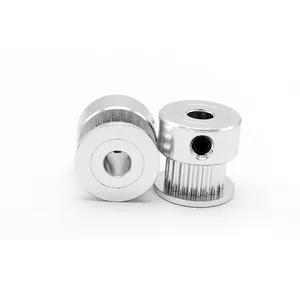

3PK 4PK 5PK 6PK 7PK 8PK 10PK 12PK Automobile Fan Drive Timing Transmission Belt Rubber V Pk Belt Pulley


Belt Pulley Belt Spot Supply 3d Printer Timing Belt Pulley GT2 16T/20T Gt2 Timing Pulley Idler Pulley Inner Bore 5mm 6mm 8mm














Belt pulleys are integral components in the realm of mechanical transmissions, playing a pivotal role in the functionality of various machinery. The belt pulleys lowes category encompasses a diverse array of pulley systems designed to meet the demands of different applications, primarily in the automotive sector. These pulleys facilitate the transmission of power from the engine to various parts of a vehicle, ensuring smooth operation.
The two primary classifications of belt pulleys are solid and fluid-filled. Solid pulleys are the workhorses of the system, channeling the engine's power to the drivetrain. Fluid-filled pulleys, in contrast, utilize hydraulic action to manage power distribution, often dissipating excess energy to prevent overload. This category also includes specialized pulleys like small pulleys and heavy-duty pulleys, each tailored for specific load-bearing requirements.
Belt pulleys serve various applications, from winch pulleys used in lifting to V-belt pulleys that support rubber belts across multiple shafts. The V-belt pulley, with its 14.5-degree angled teeth, ensures a snug fit and smooth belt movement. S-belt pulleys, featuring a single sheave wheel, are essential for the seamless operation of the transmission system. These components are not only pivotal in automotive transmissions but also in industrial machinery where precise power transmission is crucial.
The design of belt pulleys is a critical factor, with fixed pulleys being directly attached to the driveshaft, providing a stable connection to the transmission. Compound pulleys offer a more flexible setup, having a separate drive system from the motor. Materials used in pulley construction range from metals to composites, each selected for its durability and performance characteristics under varying operational stresses.
The advantages of using the right type of belt pulley include improved power transmission efficiency, reduced wear on components, and the ability to manage loads effectively. Whether it is a lifting pulley or a movable pulley, the adaptability of these components allows for their regulation in relation to the transmission and driveshaft, optimizing performance.
Selecting the appropriate belt pulley requires an understanding of the specific application and load requirements. Alibaba.com's platform offers a comprehensive range of belt pulleys to cater to various industrial needs. Buyers can explore a multitude of options, ensuring they find the pulley system that aligns with their machinery's specifications.